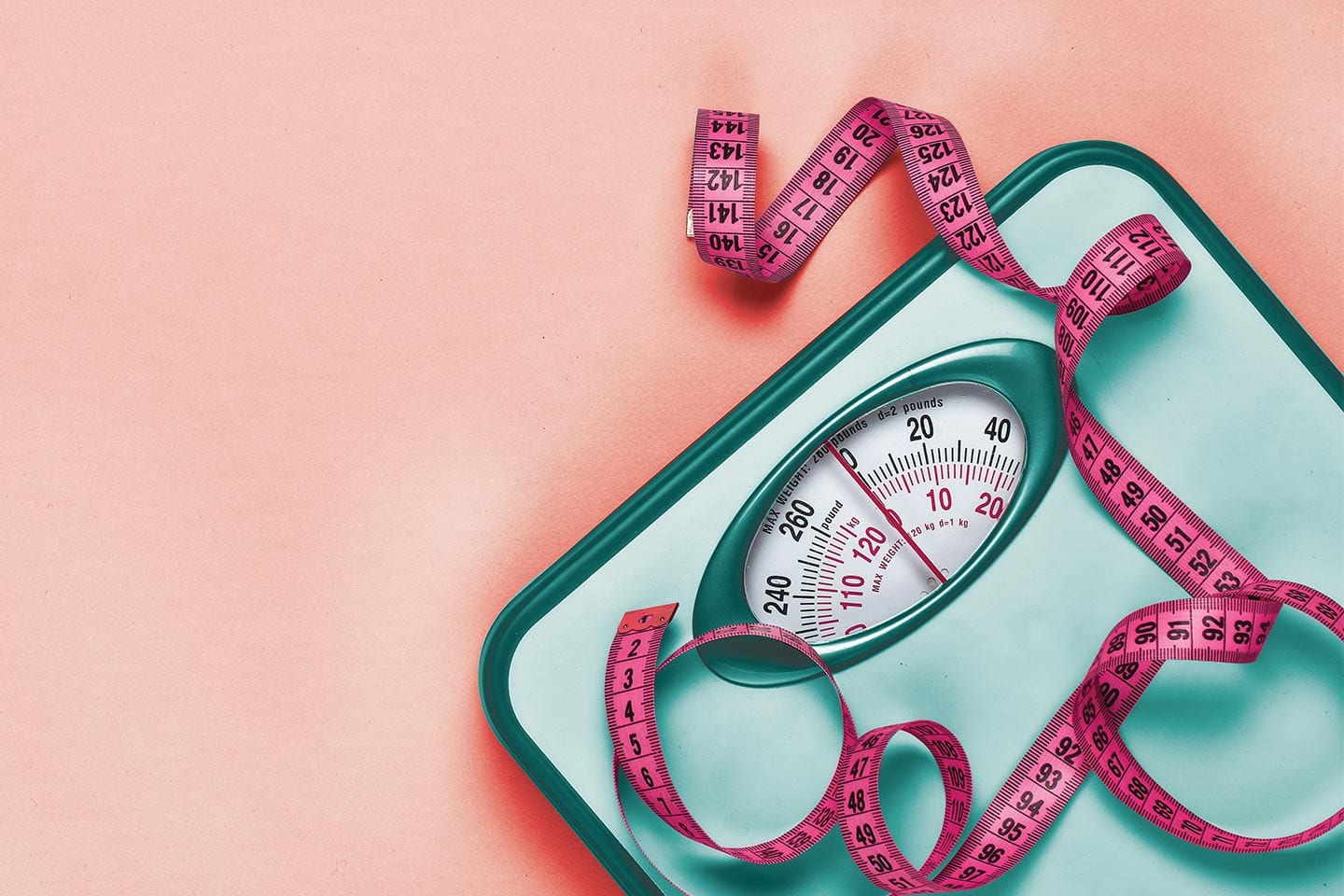Stay abreast of your health numbers to reduce your risk of cardiovascular disease and other major health consequences.
From your alarm code to your bank account PIN and your children’s birthdays, there are important numbers you have committed to memory. But did you know there are other numbers you may be much less familiar with, even though they’re just as important? Your health numbers, which include your blood pressure, cholesterol, BMI, triglycerides, blood sugar, and waist circumference, provide important clues to the health of your heart.
By Lucy Morris


Internal Medicine Specialist
Parkridge Medical Group – East Ridge
The holidays are over, the new year is underway, and it’s time to get serious about your health. When it comes to taking a proactive role in your wellness, the first step is visiting your doctor for a baseline reading on your health numbers. Dr. Samuel Abbas, an internal medicine specialist with Parkridge Medical Group – East Ridge, explains, “A number of long-term diseases such as high blood pressure and cholesterol do not cause any daily symptoms, so it’s really easy for patients to not prioritize them until it’s too late. Educating patients on their numbers and letting them understand and visualize their goals gives them something to work toward to optimize their health.”
Read on to learn which numbers you should know, why they’re important, and how you can pave the way for a happy and healthy year.
1. Blood Pressure
Why It Matters
“You may not have any symptoms from high blood pressure unless it is extremely high, but long-term high blood pressure slowly damages multiple organs, including your heart, kidneys, and brain,” says Dr. Abbas. “This is why it is sometimes referred to as the ‘silent killer.’” Unfortunately, uncontrolled blood pressure can make many health issues appear decades earlier than they otherwise would have.
How It’s Measured
You’ve likely had your blood pressure measured before – it’s done with an automatic cuff that gently squeezes your upper arm to capture your systolic pressure (the top number) and diastolic pressure (the bottom number).
What’s Considered Healthy
Less than 120/80 mm Hg
Reaching a Healthy Range
“Limit salt in your diet; exercise at least 30 minutes a day for at least five days a week; find ways to de-stress – meditation, prayer, and the practice of mindfulness can help improve blood pressure; and lose weight,” recommends Dr. Jenifer Herra, an internal medicine physician with CHI Memorial Family Practice Associates – Soddy Daisy. “A greater amount of weight loss produces a greater reduction in blood pressure.” In some cases, a medication may be recommended to lower your blood pressure.
2. Cholesterol
Why It Matters
Cholesterol can be broken into HDL, which is considered ‘good’ cholesterol, and LDL, which is considered ‘bad’ cholesterol. When HDL is too low and LDL is too high, plaque can form in your arteries and lead to stroke, heart attack, and heart disease.
How It’s Measured
“Cholesterol is tested with a regular blood draw,” explains Dr. Abbas. “I recommend that patients fast for at least eight hours prior to the blood draw for the most accurate result.”
What’s Considered Healthy
Total cholesterol – less than 200 mg/dL | HDL cholesterol – greater than 50 mg/dL | LDL cholesterol – less than 100 mg/dL in most patients, less than 70 in patients with substantial risk factors, and between 30 and 50 in patients who have extensive vascular disease
Reaching a Healthy Range
Erin Helton Crook, a cardiology physician assistant with Tennova Cardiology – Cleveland, explains, “LDL, ideally, is best lowered by diet and cardiovascular exercise; however, sometimes this alone is not enough. Statin medications, such as atorvastatin and rosuvastatin, are commonly used to aid in further LDL reduction.”

If your BMI is too high, you can bring it back into a healthy range by losing weight.
3. BMI


Cardiology Physician Assistant
Tennova Cardiology – Cleveland
Why It Matters
BMI, or body mass index, is a measurement that takes into consideration your height and weight to determine if you are underweight, healthy weight, overweight, or obese. “High BMI, greater than 30 specifically, is directly correlated to high blood pressure, high cholesterol, diabetes, stroke, vascular disease, chronic pain, depression, and the list goes on and on,” says Crook.
How It’s Measured
BMI is calculated by dividing your weight in kilograms by your height in meters squared, but you can easily find a calculator online.
What’s Considered Healthy
18.5 to 24.9 kg/m2
Reaching a Healthy Range
If your BMI is too high, you can bring it back into a healthy range by losing weight. A healthy rate of weight loss is 1 to 2 pounds per week, which can be done by reducing portion sizes, trimming your caloric intake, and choosing foods that are nutrient-dense and will keep you feeling fuller longer rather than highly processed foods that are high in sugars and simple carbohydrates.
4. Triglycerides
Why It Matters
“Triglycerides are a type of fat found in your blood,” explains Dr. Herra. “When you eat, your body converts any excess calories to be stored. Some are stored in the form of triglycerides in your fat cells. If you regularly eat more than what your body needs for energy – especially high carbohydrate foods – your triglycerides may be high. High triglycerides increase your risk of stroke and heart disease by contributing to thickening the walls of your arteries.”
How It’s Measured
Like cholesterol, triglycerides can be measured from a blood draw. You will also want to fast for at least eight hours before this blood draw.
What’s Considered Healthy
Less than 150 mg/dL
Reaching a Healthy Range
Your body stores excess sugar as triglycerides, so the best way to lower your triglyceride level is to eliminate extra sources of sugar from your diet. Soft drinks, sweetened cereals, desserts, and sugary juices should be significantly reduced or eliminated entirely. Instead, add extra servings of high-fiber foods, like vegetables, whole grains, fruits, and more. In some cases, a triglyceride-lowering drug may be recommended.


5. Blood Sugar
Why It Matters
“Glucose at the right amount is appropriate fuel for the cells of your body,” says Dr. Herra. “But high blood sugar levels can essentially ‘wear out’ the pancreas by causing it to push out too much insulin until it becomes damaged. Studies have also shown that high blood sugar levels can be directly toxic to the cells of the pancreas, aiding in the progression of diabetes. High blood sugar can negatively affect nearly every organ system in the body.”
How It’s Measured
Blood sugar can be checked through a blood draw during a routine physical exam.
What’s Considered Healthy
A fasting blood glucose level of less than 100 mg/dL and an A1C of less than 5.7%
Reaching a Healthy Range
“Substantial diet changes and increased cardiovascular exercise alone can control blood sugars over time,” explains Crook. “Diet changes such as avoidance of simple sugars and carbohydrates would be very beneficial for those with elevated blood sugar. If diet and exercise alone aren’t cutting it, certain medications, such as metformin, will be used.”
6. Waist Circumference


Internal Medicine Physician
CHI Memorial Family Practice Associates – Soddy Daisy
Why It Matters
Too much weight around your midsection, also called central obesity, increases your risk for cardiovascular disease and type 2 diabetes.
How It’s Measured
This is measured in inches, so you can easily calculate your waist measurement at home with a tape measurer. To do so, simply wrap the tape measurer around your waist – about belly button height – until it meets in the middle.
What’s Considered Healthy
35 inches or less for women, 40 inches or less for men
Reaching a Healthy Range
To reduce your waist circumference, an uptick in exercise will likely be important, in addition to adopting a healthier diet. Consider walking, swimming, biking, or dancing for at least 60 minutes most days of the week. Strength training at least two days a week will also help.
Ultimately, knowledge is power. “Knowing and understanding your numbers makes you accountable for your own health, therefore aiding in change and prevention,” says Crook. “We can’t change our genetics, but we can decide what goes into our bodies and what lifestyle we want to live.” HS

